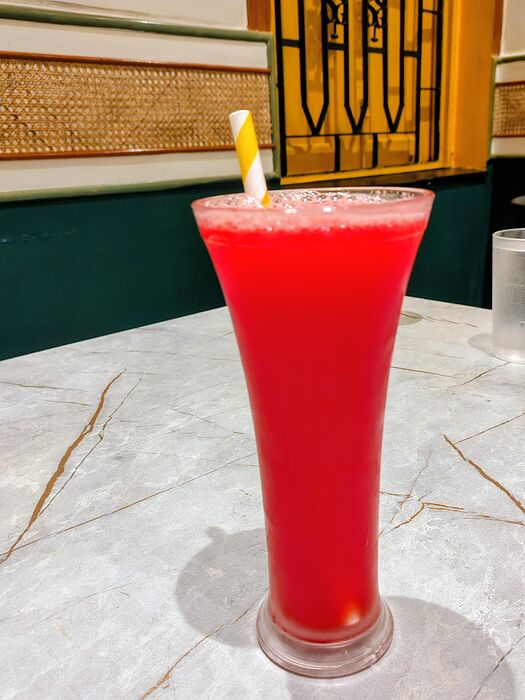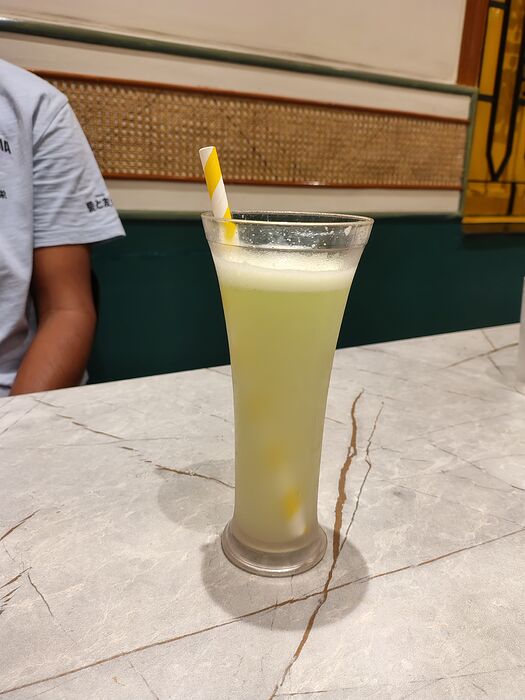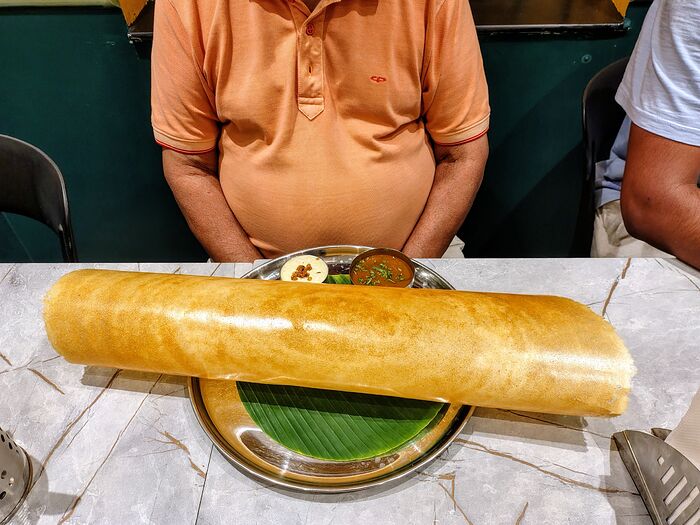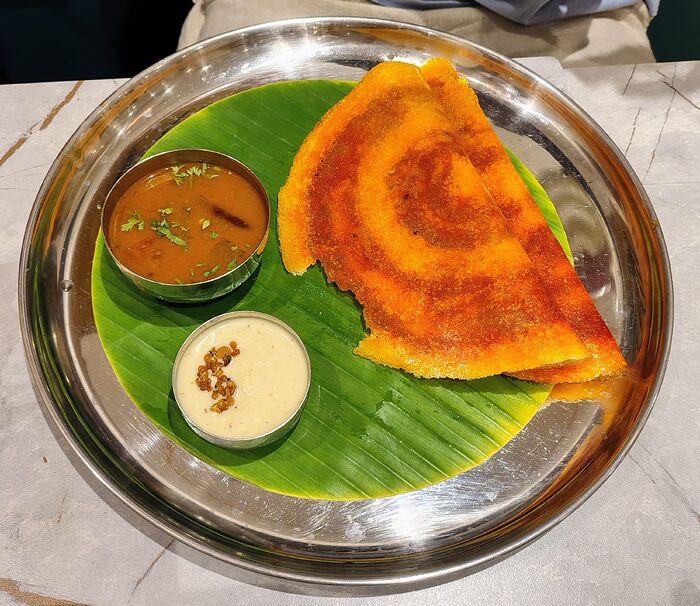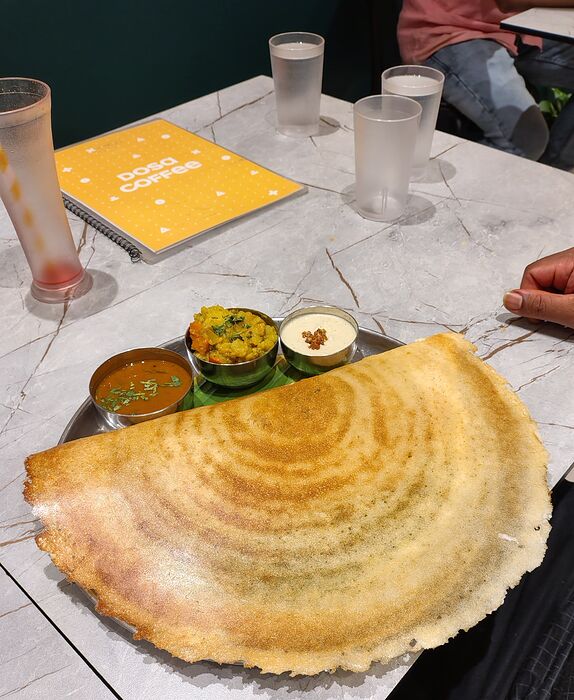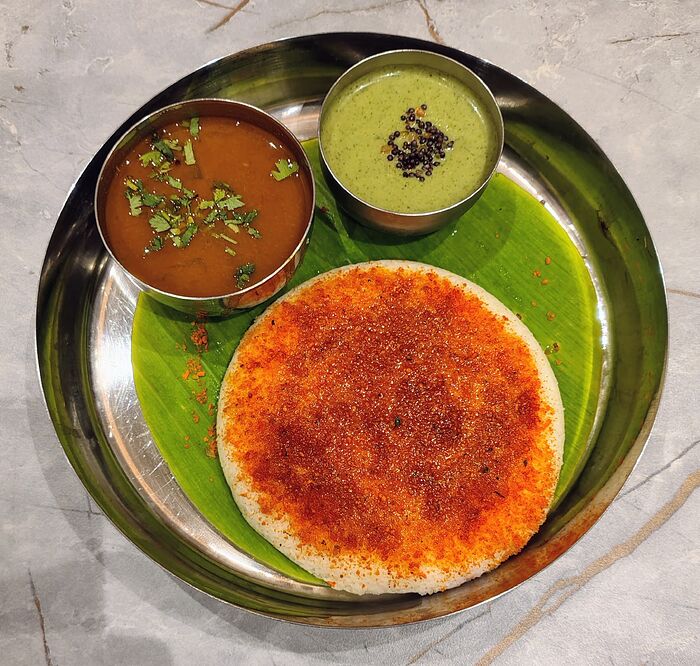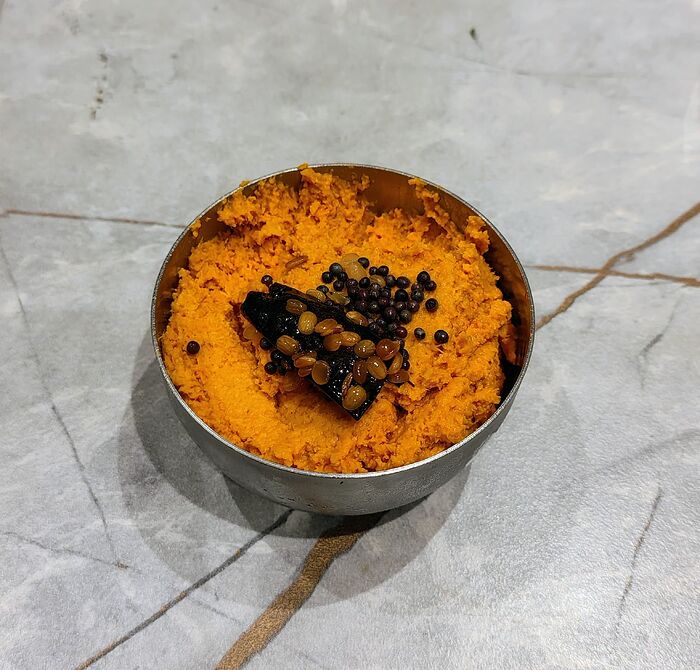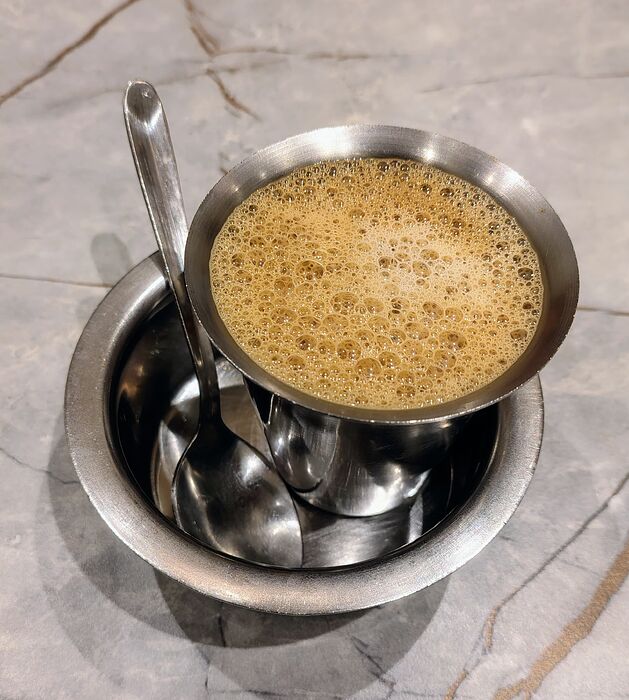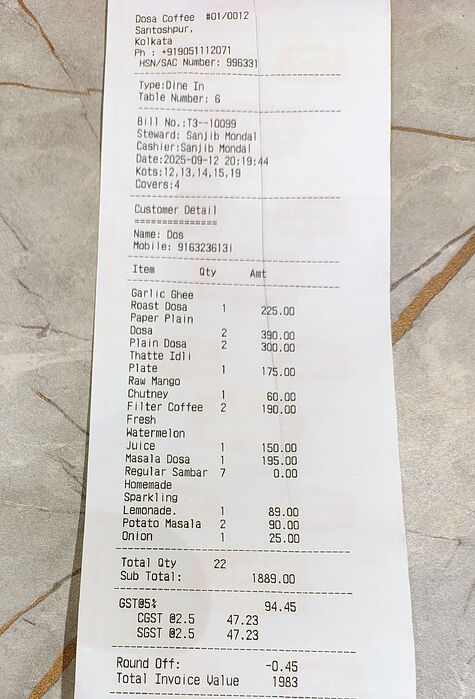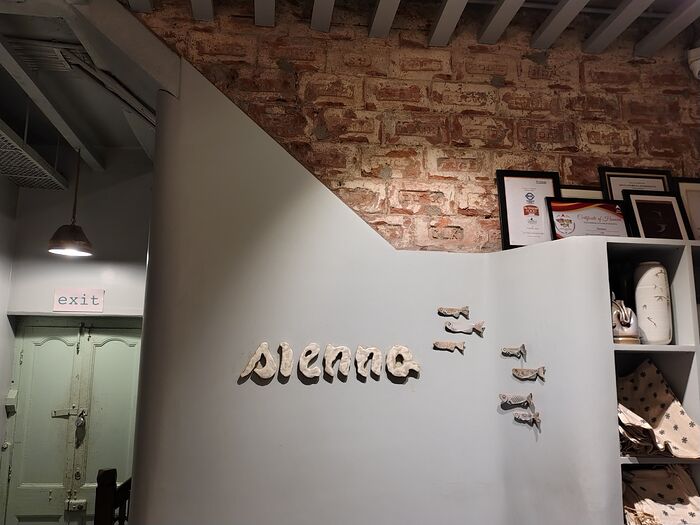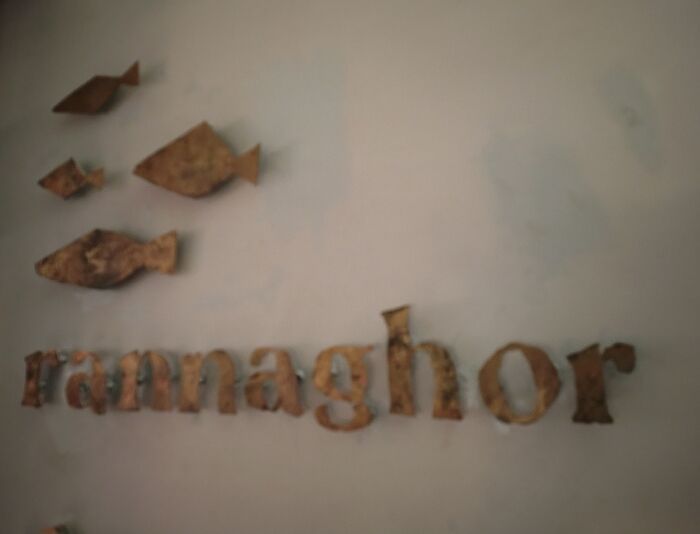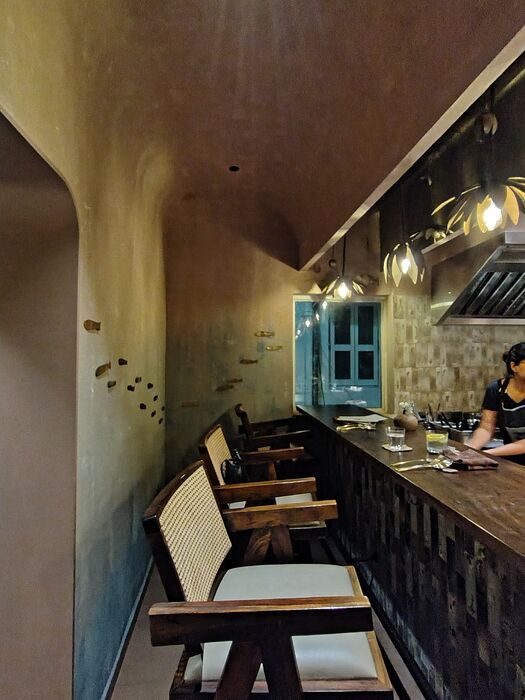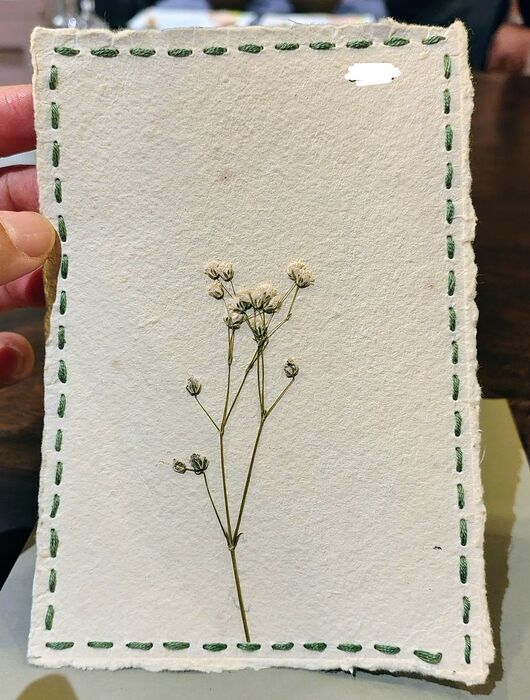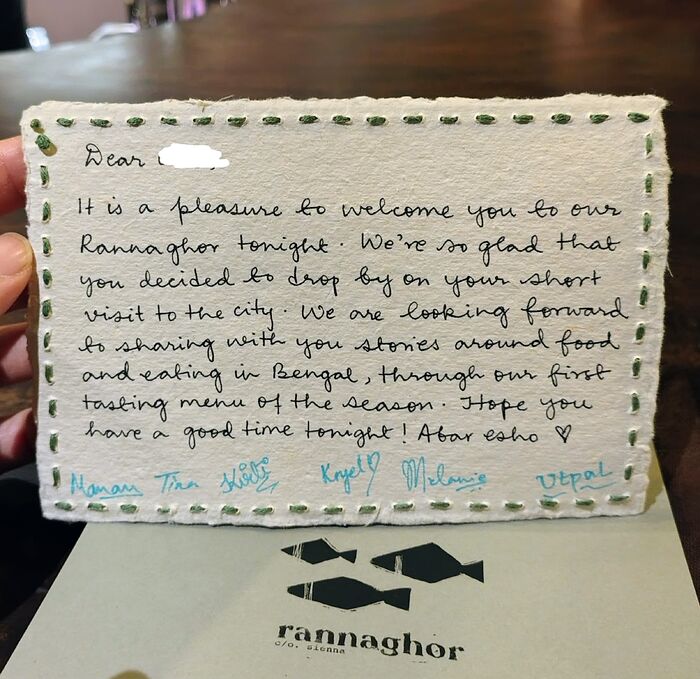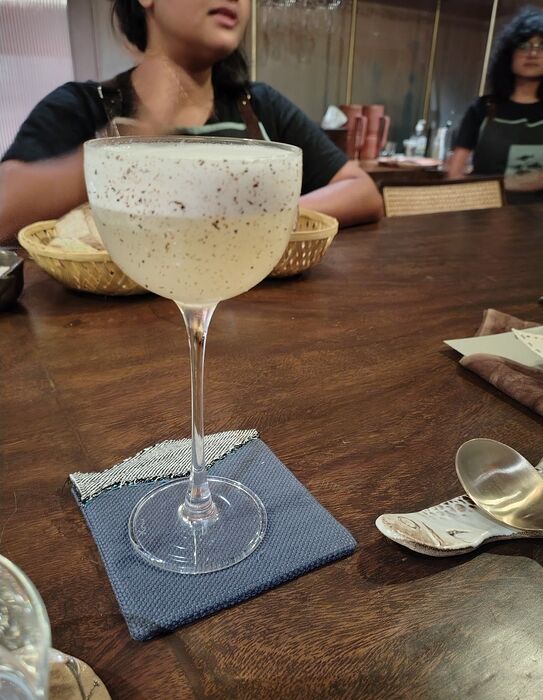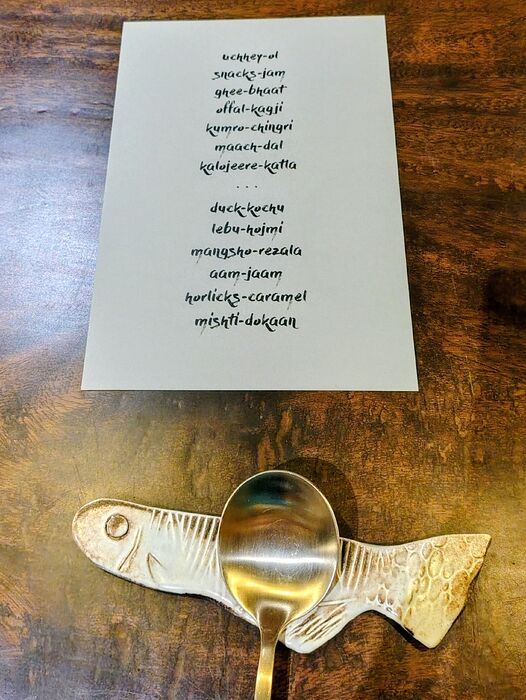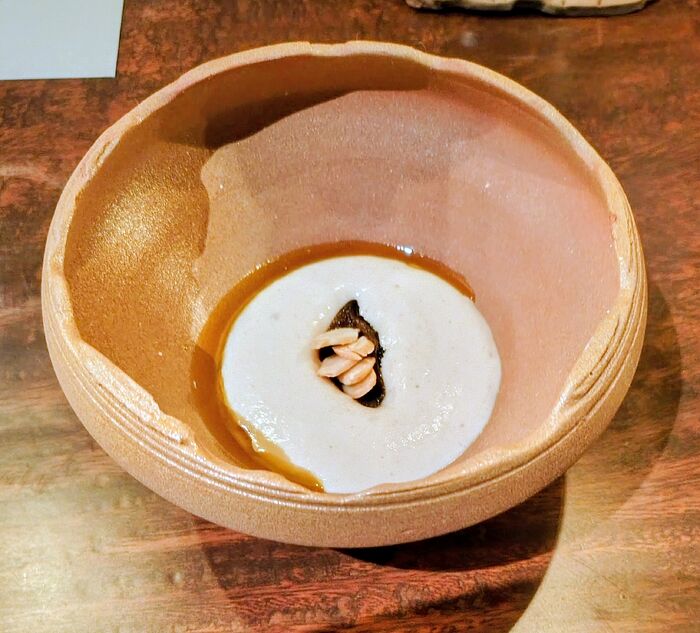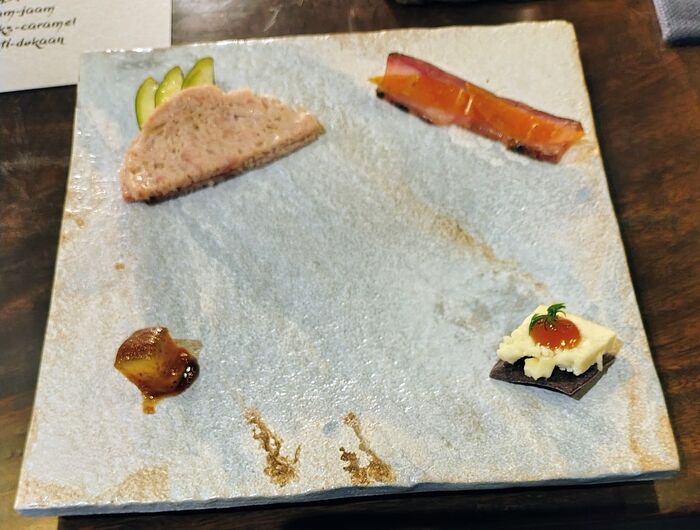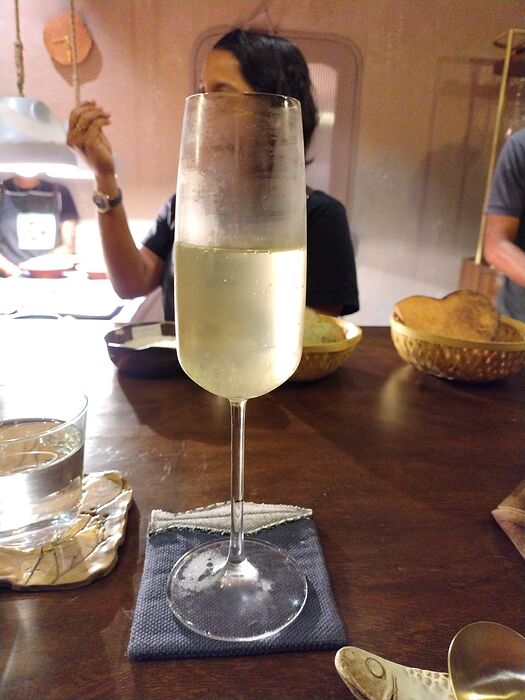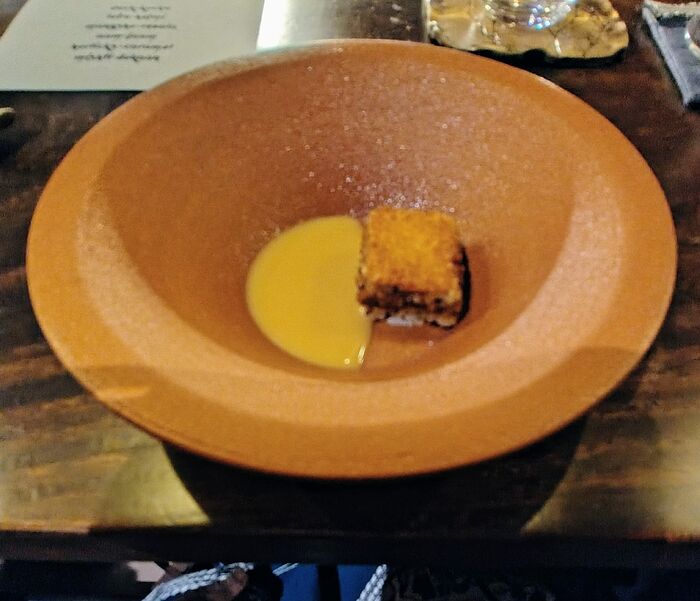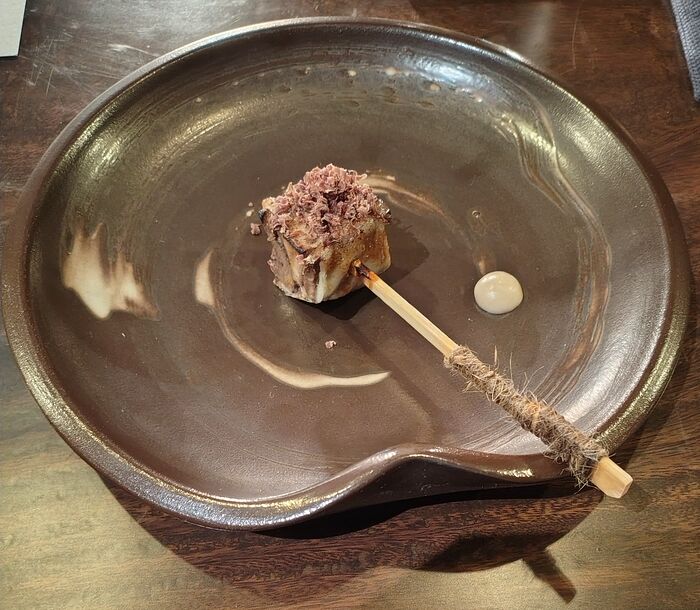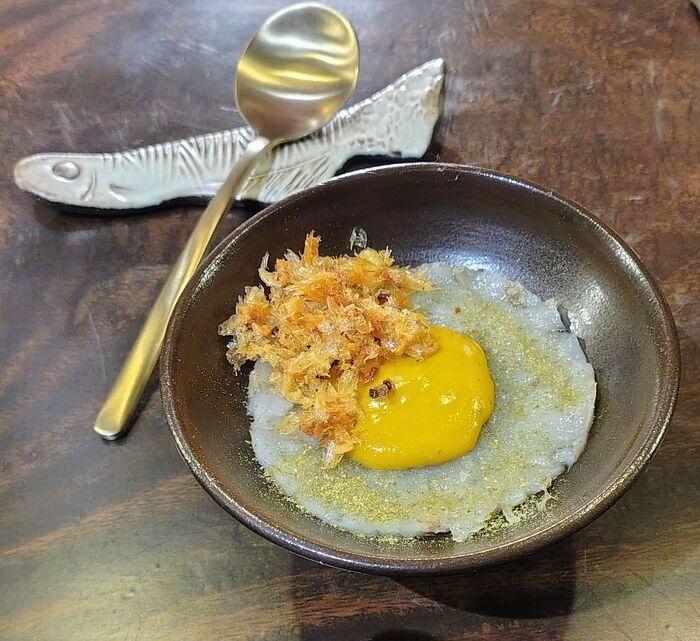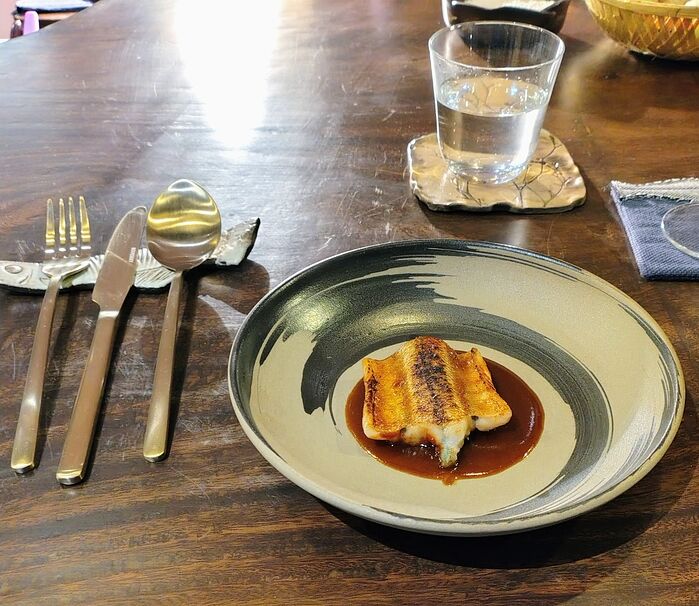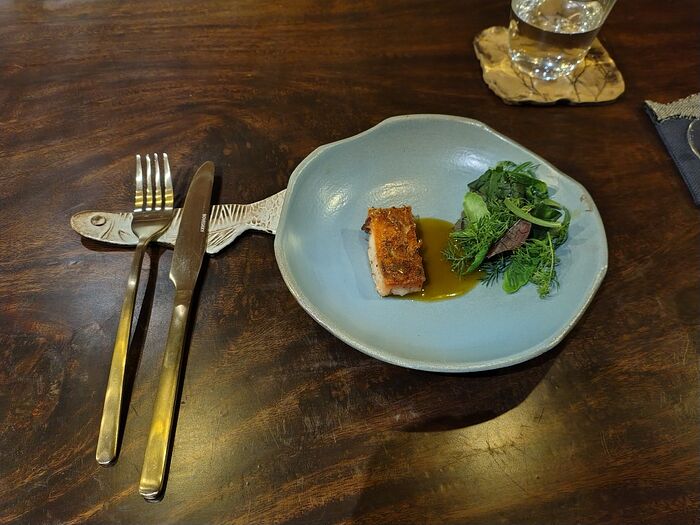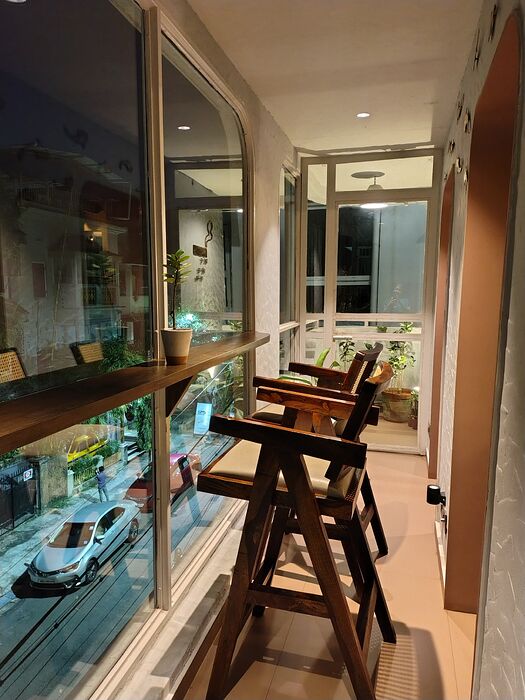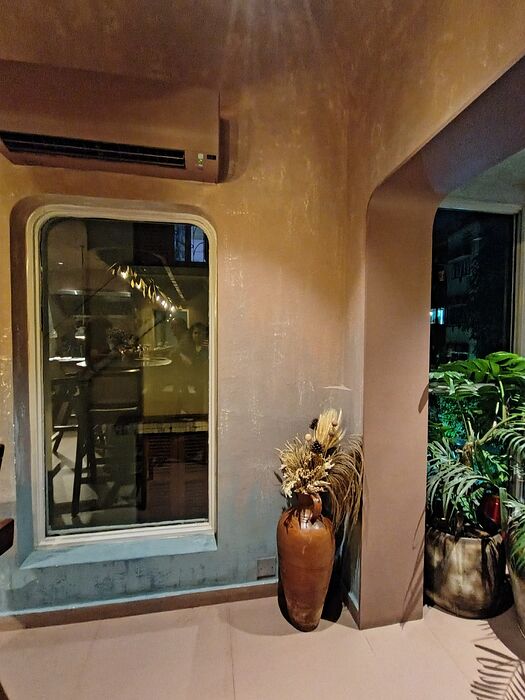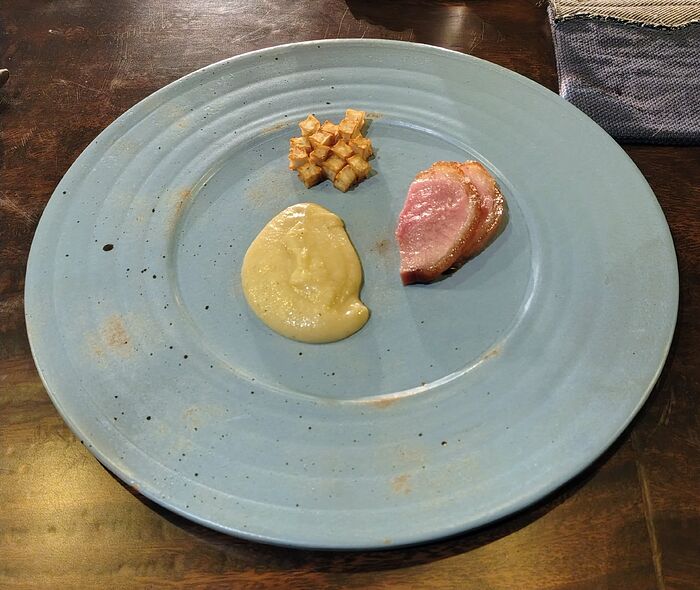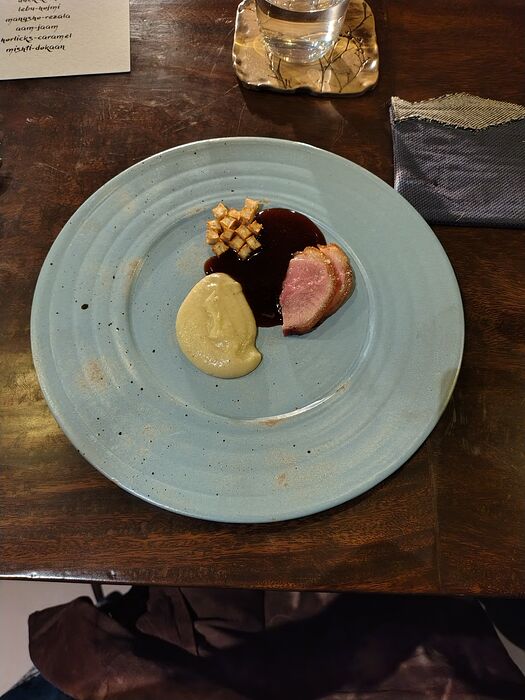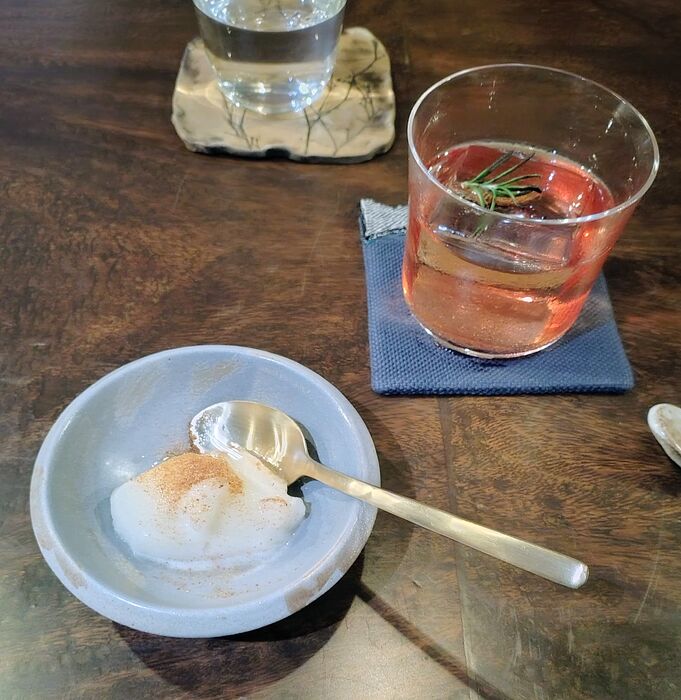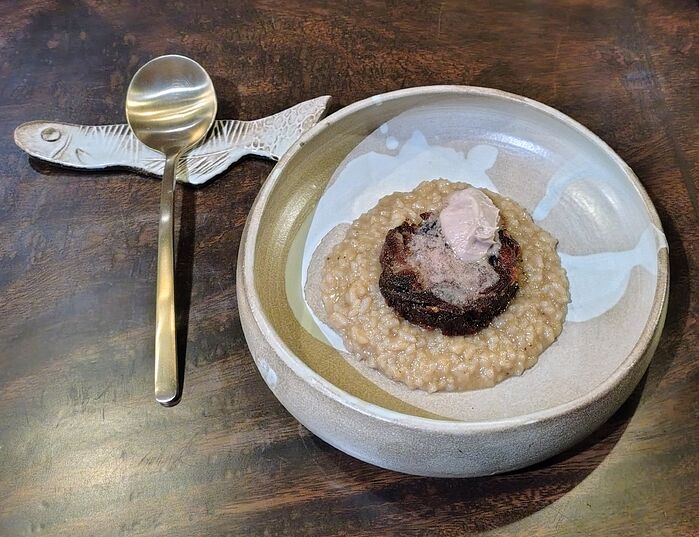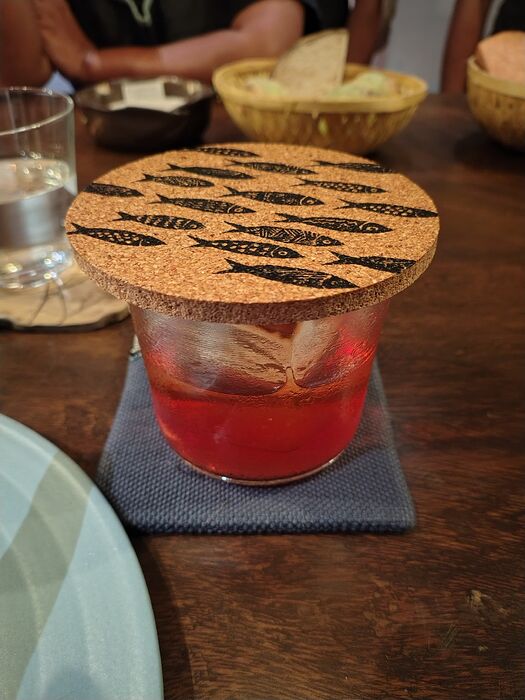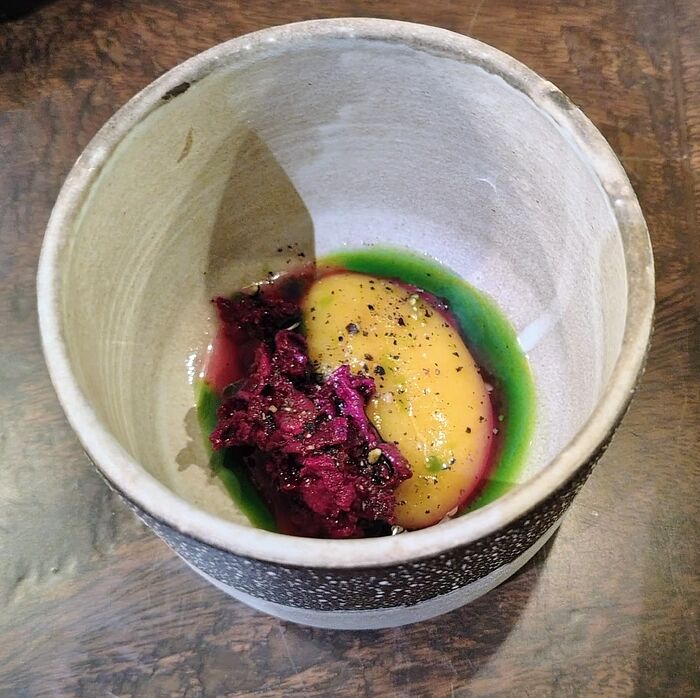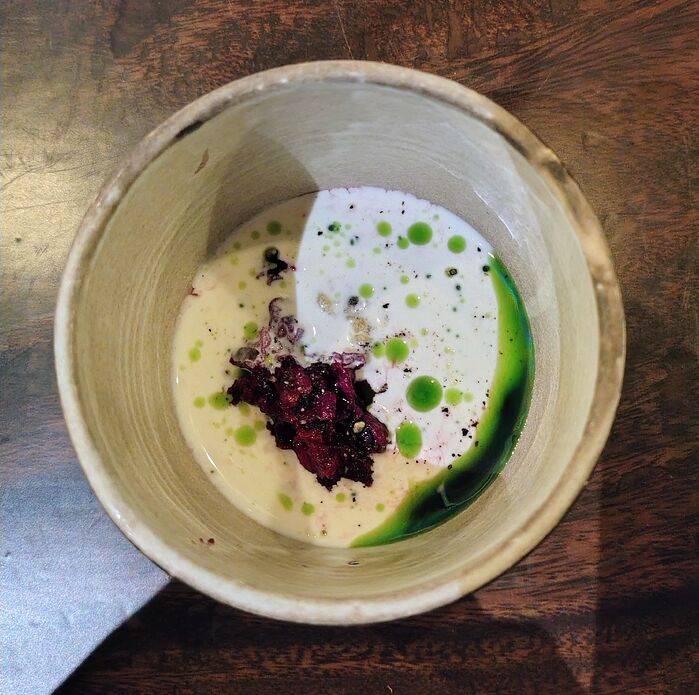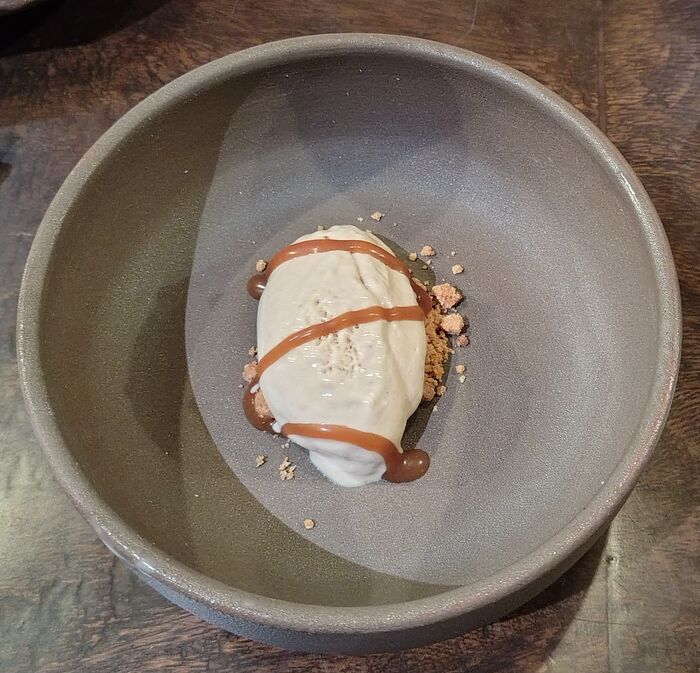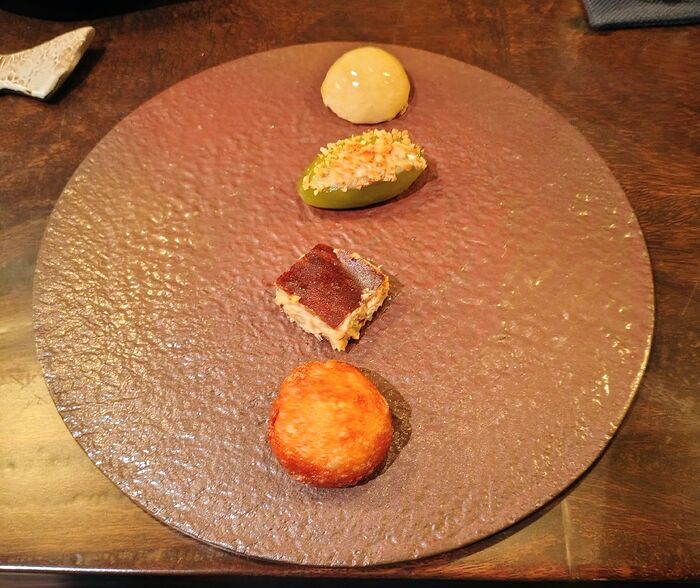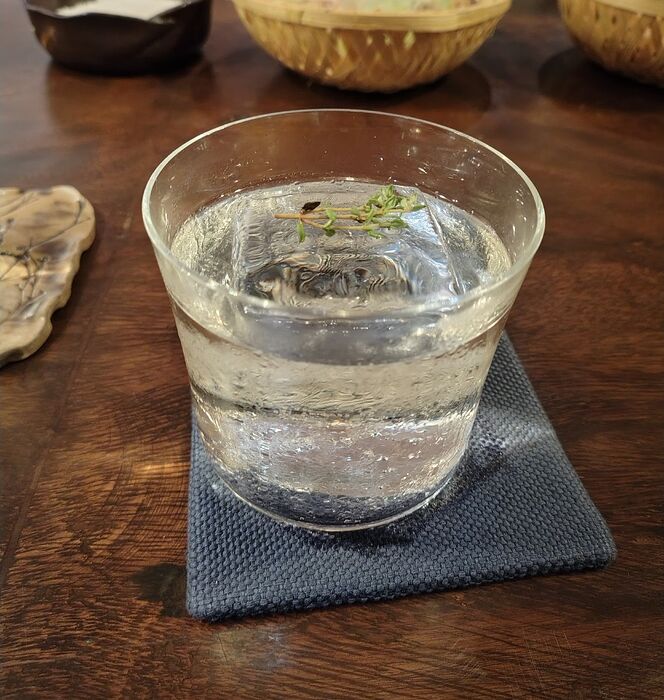Thanks for this article. I knew Bengali Hindu widows were traditionally bound by very strict rules but didn’t realise that some of the ‘greatest hits’ of Bengali cuisine evolved from their hardship.
Dinner out together at Dosa Coffee, a chain specialising in South Indian cuisine:
Nice, bright, clean premises. Service was a little hesitant. Food and drinks were well made and tasty across the board.
Watermelon juice and sparkling lemonade:
Paper dosa:
Garlic ghee roast dosa:
Masala dosa. I thought it was a bit odd that they served the masala on the side:
Thattu idli. This was my order and I paid extra to have a raw mango chutney in addition to the ‘special spicy green chutney’ that came with the idli. The special green chutney was a bit meh. The podi seasoning on top of this idli was too ghee-forward for my liking.
The raw mango chutney - this was excellent.
Filter coffee. A bit too milky for my liking but served in the traditional stainless steel cup, so they get points for that.
Reasonably priced for sitting in an air conditioned clean space. The bill:
Those dosas look absolutely mouthwatering.
Lolol
My parents love to watch ‘Kaun Banega Crorepati’ (the Indian version of Who Wants to be a Millionaire) so I’ve been forced to watch it on several evenings to spend time with them. I was intrigued to see that the prize for successfully getting past a particular state of the show is a 2-year supply of the brand of ghee that is one of the sponsors of the gameshow.
I’m curious what volume is considered an annual supply. Even within my own family, it varies significantly.
And from community to community it’s very different – my marwadi friends often cook in ghee (originally as a demonstration of abundance, I think), gujaratis use it for chapatis, as a topping for dal-bhaat, and in sweets, maharashtrians use it similarly for varan-bhaat and sweets but not chapatis, and so on.
1 litre of mid-priced commercial ghee is currently about 3-5x the price of cooking oils.
Hmmm. On the show they say something along the lines of “Do saal ka ghee ka bhandar milegi”. And doing a little Googling, someone had posted on Facebook that : "KBC में मिला 2 साल तक FREE Govardhan घी और ₹5 लाख! सब रह गए हैरान! "
Maybe they give you a voucher with a date on it? But surely someone couldn’t just walk off with loads of ghee saying that they use it as their standard cooking fat?
Years ago, someone in our family won a newspaper recipe contest which came with a year’s supply of aluminum foil — arrives all at once in a giant box ![]() . It lasted a LONG time
. It lasted a LONG time ![]() – in fact I think the last of it discolored, it had been sitting around for so long!
– in fact I think the last of it discolored, it had been sitting around for so long!
Sienna occupies the entirety of an old house in South Kolkata. The ground floor has a cafe and a shop selling handicrafts. The first floor has a restaurant and for the past 6 weeks or so, the second floor has been ‘rannaghor’, showcasing a tasting menu. rannaghor@sienna is open Fri, Sat, Sun, serving a maximum of 8 diners for a 13 course tasting menu which lasts 2 hours from 8-10pm. There is a short break after the 7th course. We went on a Saturday night and there were only 4 diners including us. They said a group of 4 cancelled when they were told they couldn’t arrive at 9:30pm. When I booked online, the team were very responsive, with prompt replies from an assistant manager who requested relevant details.
The room has classy decor in earth tones and diners are seated at a counter surrounding an open prep area.
Each place setting had a card of beautiful handmade paper with each individual diner’s name on it and a personalised message.
Welcome drink: gin-based with a lemongrass flavour profile.
The lady standing behind the counter is the head chef Koyel Roy Nandy, a very softly spoken young woman who chatted with us throughout the service.
Sorry, this rannaghor@sienna write up is going to end up being in installments.
The tasting menu:
A lot of it might not make sense if you’re not familiar with Bengali cuisine.
Course 1: uchhey-ol
Bengali cuisine has a philosophy of starting a meal with bitter tastes to whet the appetite and this course was meant to represent that. Ucchey is a varietal of bitter gourd and ol is a large tuber sort of like celeriac.
Course 2: snacks-jam
A plate of 4 snacks. Clockwise from top left - ‘Mortadella’ made from sting ray, which is a play on chitol machher muiththa, ‘bacon’ made from katla machher peti (belly part of katla fish) and covered with thin slivers of mango leather, ‘cheese and cracker’ with compressed chhana (cottage cheese), plum gel and green chilli slivers, and ‘pork belly’ which actually had no pork in it. I can’t remember what it was made of.
Cocktail pairing for the above courses was a rum-based sparkling drink infused with carrot, green apple and grapefruit. I’ve never come across something like this before.
rannaghor@sienna tasting menu continued:
Course 3: ghee-bhaat
Ghee bhaat is a Bengali pilaf which is mainly flavoured by ghee and the fragrance of heirloom rice varieties. Here they have used ‘kanakchur’ rice, but instead of the usual pilaf, the rice is presented as a compressed cake crisped all over by frying in ghee, with a ghee sauce on the side. There was a layer of lentils incorporated into the middle of the cake. My photo of this course is terrible.
Course 4: offal-kagji
This was the course I found most challenging. It is a kebab made of goat offal. The kebab is made of liver, kidney and spleen, wrapped in caul fat and grilled and then sprinkled with shaved heart of goat. The white blob on the side is gel made from a very fragrant lime variety native to Bengal.
Course 5: kumro-chingri (pumpkin-prawn)
I loved this course. The white of the ‘egg’ is made of barely cooked prawn sliced very thinly. The ‘yolk’ is pumpkin puree. Fried tiny mud shrimps sprinkled on top.
Course 6: machh-dal
Grilled garfish in a puree made of dal. This was ok.
Course 7: kalojeere-katla
A piece of fried katla fish with fresh herbs and a kalojeere (nigella seed) vinaigrette.
I forgot to take a photo of the cocktail pairing for the latter part of the first half of the tasting menu. It was a gin-based cocktail that included red wine in it.
After 7 courses there was a break where we could stretch our legs. I took some photos of the space.
Then we were back for Course 8: duck-kochu
Potatoes are a relatively recent arrival in Bengal (maybe just around 200 years?) so before then the tuber of choice was ‘kochu’ which is similar to a Jerusalem artichoke.
A duck jus was poured over by chef Koyel.
Course 9: lebu-hojmi (lemon-digestive aid)
A palate cleanser of lemon sorbet sprinkled with finely powdered ‘hojmi’ - these traditional digestive aids are sort of salty and spicy. I am not quite sure why the palate cleanser was slotted here, because the next course was also a savoury meat-based course.
Course 10: manghsho-rezala (mangsho means goat meat and rezala is a specific cut of the meat)
They’ve deliberately provided only a spoon as the goat is tender enough to eat with a spoon. It is sitting on top of a risotto made with the mutton stock and has a generous blob of bone marrow whipped butter on top.
The cocktail pairing for this section was a ‘negroni’ which had no campari in it. The colour is from red bell peppers.
Onto the desserts!
Course 11: aam-jaam (mango-plum)
Mango puree, jaam puree and a herb emulsion. The plum is a variety native to India which has an intense purple colour.
Cream was then poured over:
Course 12: horlicks-caramel
Horlicks is a brand of malted milk powder drink which is ubiquitous in Bengal (and much of India, I suspect). Here, it’s presented as ice cream with a salted caramel drizzle and biscuit crumble underneath.
Course 13: mishti-dokaan (sweet-shop)
Their take on petit fours, with a selection of mini Bengali sweets. I was too full and my husband had to finish this for me.
The cocktail pairing for the desserts was a clear sparkling drink strongly infused with carom seed, which is a traditional Indian digestive aid.
That looks really good. Just curious - what is the cost of such a tasting menu in Kolkata ?
The tasting menu was rupees 4500 per head and the cocktail pairing was 2500 per head. Those prices included tax.
It’s obviously hard to compare prices between countries with different income levels but at least from an US view $50 is a steal for such tasting menu
What an absolutely epic meal and cocktail pairing!! Thanks for this report, it was fascinating. I too would have struggled with the offal course.
I thought it was very good value. They told us they had only been open for 6 weeks. I wouldn’t be surprised the next time I visit Kolkata, if they either (a) have increased the prices quite a bit or (b) closed down because of a lack of customers.
I hope they thrive because they are a really creative and thoughtful group of young chefs.
That whole meal is stunning, and $50 would truly be a steal anywhere. Wow! Thank you for sharing!
Wow, my dream meal!!
Very personalised welcome note.
Is it ghondoraj? A Bangladeshi foodie friend calls it the Bengali yuzu. ![]()
And here in Singapore and Malaysia, too, during the 1950s/60s/70s.
Wow, quite a bargain for such an elaborate, well-conceived meal! A similar meal here in Singapore, Kuala Lumpur or Penang would cost 3 to 4 times that!!
